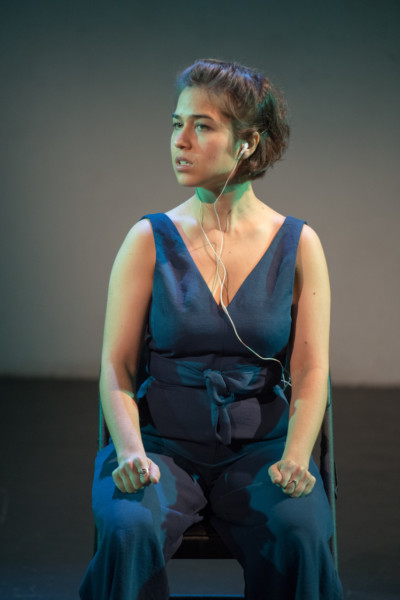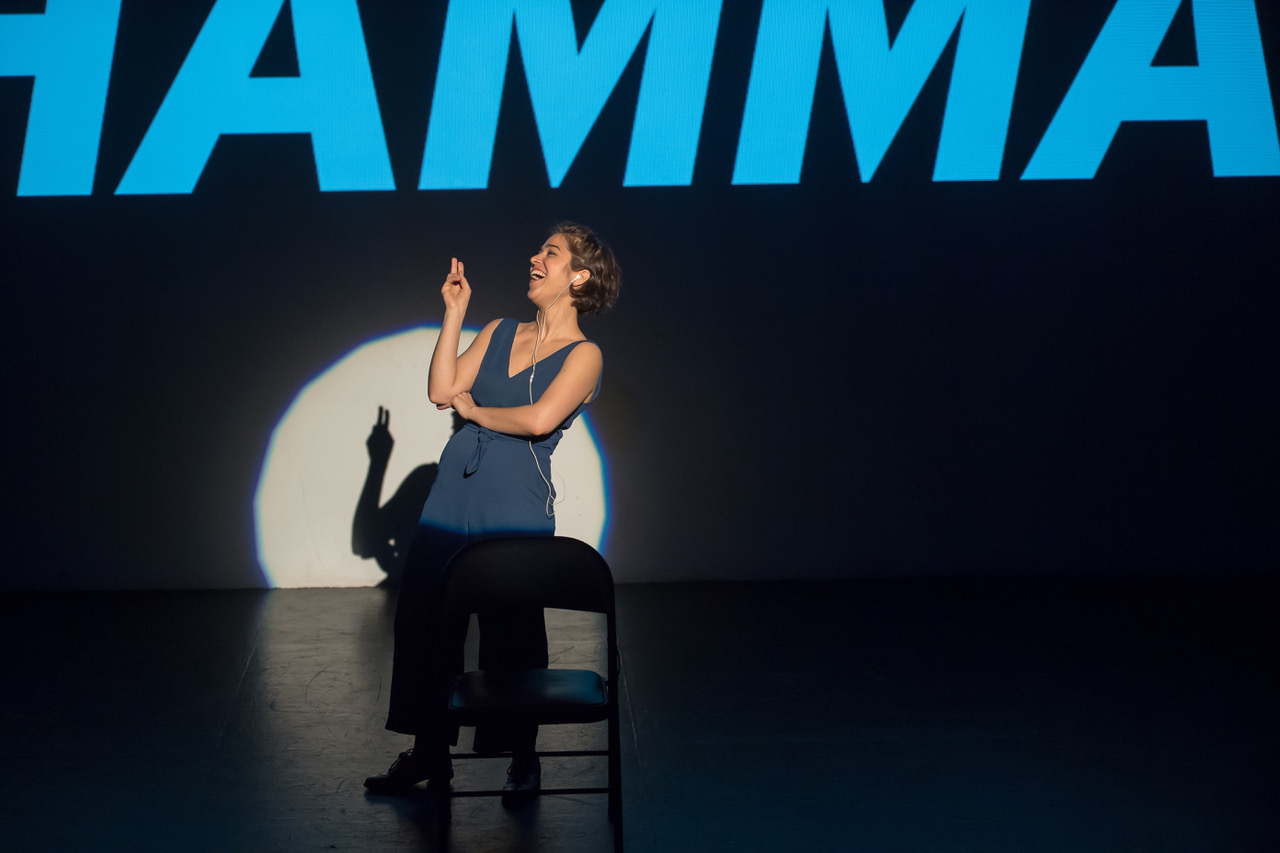This week, in a rehearsal room at Molloy College in downtown Manhattan, Xandra Clark sat in a folding chair, one leg tucked under the other, hand on her forehead, deep in thought. The room, fluorescent lit, was mostly empty. Clark, who is 28, had earbuds in; her cell phone was tucked into a pocket. “Most people think polyamory is just about having orgies,” she said. “It’s just like, no, I’ve never had an orgy.” She laughed between breaths.
The line came from someone named Casius, with whom she’d conducted an interview as part of “Polylogues,” a documentary theater project on non-monogamy playing through Friday at Dixon Place. Clark, a writer and performer, spent over a year talking to more than 40 people, granted pseudonyms, from around the world (the United States, China, and Malaysia, for example). Some have children, or are the children of polyamorous people; some are married, or will be soon. They are senior citizens, military veterans, Latinx, evangelical Christians, swingers, people from Muslim majority countries. Clark, who has a background in theater and radio journalism—she has a masters in journalism from Stanford University and worked at StoryCorps—hired dialect coaches to help her master the accents and speech patterns of her subjects, and used painstaking notes to reconstruct their facial movements. In her performance, she assumes the roles of her subjects completely, presenting monologues culled from their conversations.
ICYMI: Uneasy rider: The man with the MTA newsletter
Clark trained under Anna Deavere Smith, the actress and playwright known for popularizing transformations of nonfiction interviews into stage performances. There is a long history of such work: in Clark’s master’s thesis, she wrote about the legacy of collaboration between theater and journalism (powerful examples include “The Laramie Project,” “The Deputy,” and “8”). In the 1930’s, the Works Progress Administration’s Federal Theatre Project funded “Living Newspapers,” which delivered information on social matters of the time. “Non-monogamy was the way in, but really I’m asking people to think about how you intentionally decide how you want to love,” she said.
For this piece, Clark was inspired by the bell hooks book, All About Love (2000). “Even as a kid I would be asking adults, ‘How does your marriage work?” she recalled. “When did you decide they were the one, and why?’”

Xandra Clark, creator and performer of “Polylogues,” a solo documentary theater project about non-monogamy. Photo by Ashley Garrett
In 2017, she began to interview friends and acquaintances about non-monogamy, hoping to combat stigmas that surround different kinds of relationships. “It started with just three interviews and I performed those at a performance night,” she said. “The response was so surprising because people were coming up to me afterwards and in these hushed tones saying ‘Oh my gosh, I have all these questions I want to ask you, you need to talk to my friend, you should interview me.’” Clark expanded it into a full show for the first time last fall at The Tank, in New York.
“Polylogues” has no set, no costumes, no music. There is little in the way of preamble. She does not define polyamory—it means having more than one romantic partner, but divergent approaches make it tough to get more specific than that. “All you have to do for this to work is listen,” the show begins. Clark’s performance is funny and warm; tender moments sneak up on the audience. On Valentine’s Day, as the show went on, a couple sitting near the front gradually leaned into each other, closer and closer.
There is a script—during rehearsal, Molly Clifford, the director, sat flipping through it, sipping iced coffee, and jotting down notes—but Clark doesn’t memorize her lines. On stage, she keeps the earbuds in, listening to recordings of the interviews live, speaking the words for the audience a half-second after hearing the original speech. The shattering of the fourth wall allows viewers to experience the reporting process from the perspective of a journalist. Clark refers to this as active listening. “You’re always constantly aware of the fact that it is someone struggling to embody someone else’s words,” she explained.
At rehearsal, Clark and Clifford spent three hours in a kind of visual fact-check, critiquing and adjusting the performance for accuracy as though they were refining sentences in a magazine story come alive onstage. During a monologue from a source named Rose, Clifford spent considerable time workshopping Clark’s posture: How had Rose’s legs intertwined? How had Rose leaned on a chair, and how had that impacted the conversation’s tone? As she spoke about how one couple made the decision to be open, Clark gently rubbed her thumb and forefinger together; during a monologue from a source named K, she coughed through the words, as K had during the interview while expressing regret at having pushed a former partner to try polyamory. Through Clark, the audience gets first-hand access to all the tiny tics that can be difficult to convey in writing and are invisible on the radio.
Journalism outlets have taken the stage—California Sunday’s Pop-Up Magazine narrates stories before an audience, podcasts like RadioLab regularly go on tour, “performing” their shows live. But Clark’s show is unique in its format and ethical conundrums. At first, she said, “I was actually, interestingly, kind of resistant to doing a show like this. Partially because I was working in radio, and especially in the realm of personal storytelling, where my feeling was, ‘If this person has a story then what is my authority to tell it for them? Why don’t I just have an audio piece and they can tell it themselves? Why should it be filtered through me?”
But she realized that her performance of monologues created an opportunity for storytelling that would have been otherwise impossible. “Many people want to talk about this and by doing it this way, they can actually be fully anonymous,” she explained. “Even on the radio, many people don’t want their voices heard. So it felt like this form is actually in service of the stories that need to be told.”
ICYMI: Do journalists pay too much attention to Twitter? Here’s a study you should read
Alexandria Neason was CJR’s staff writer and Senior Delacorte Fellow. Recently, she became an editor and producer at WNYC’s Radiolab.

